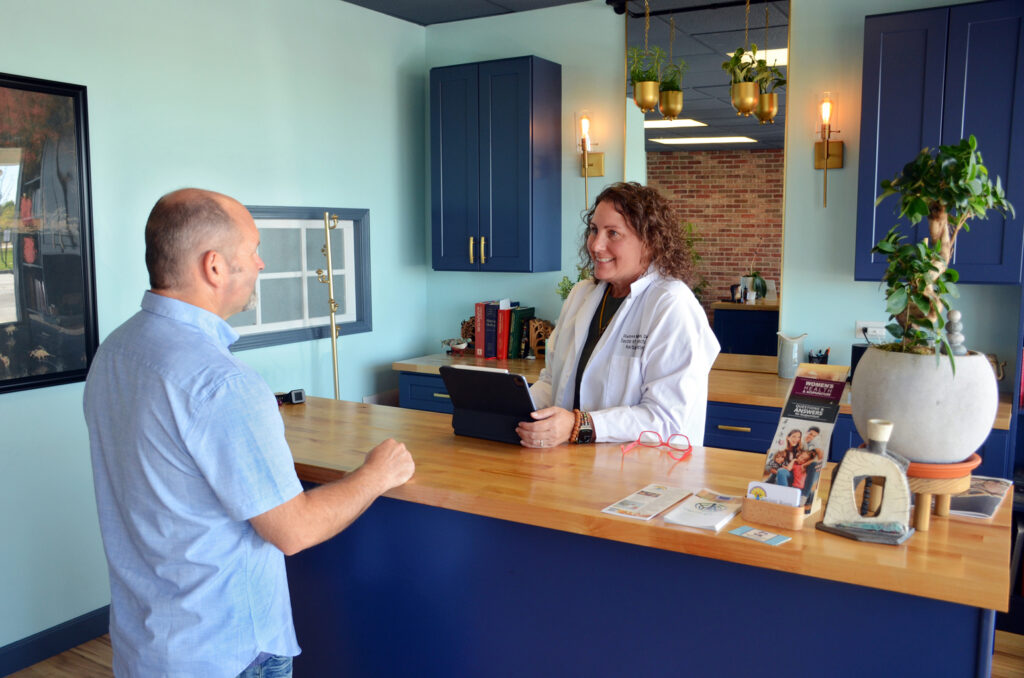Ancient Roots is Rooted in Ancient Wisdom, Guided by Modern Care.
Our Whole Person Approach to Treatment
East Asian Medicine restores balance in the body and supports natural healing. We view health as the harmony of body, mind, and spirit.
Where Modern Health Meets Ancient Practice
Where Modern Health Meets Ancient Practice
Where Modern Health Meets Ancient Practice
Where Modern Health Meets Ancient Practice
Where Modern Health Meets Ancient Practice
Core Therapies and Real Results
Acupuncture
A cornerstone of East Asian Medicine, acupuncture uses fine, sterile needles to gently stimulate specific points on the body. This improves the flow of Qi (energy) and blood, reduces inflammation, and calms the nervous system.
Treatment of Generalized Anxiety Disorder: A 2022 meta-analysis including 27 RCTs (n = 1,782) focused on GAD showed relative risk (RR) of ‘effective response’ = 1.14 (95% CI 1.09–1.19), meaning patients treated with acupuncture were ~14% more likely to report effective anxiety relief than control groups utilizing standard of care only
Herbal Medicine
Customized formulas of natural herbs, roots, and botanicals target underlying imbalances in the body. Unlike one-size-fits-all medications, Chinese Herbal Medicine is individualized for each patient’s needs.
Herbal medicine has shown significant therapeutic promise across diverse conditions, particularly as adjunctive therapy.
Tui Na Massage
Tui Na (推拿) is a form of Chinese medical massage or body work used in Traditional Chinese Medicine (TCM) to promote healing by manipulating the body’s energy flow (Qi), muscles, joints, and soft tissues. It is both a therapeutic bodywork technique and a clinical treatment that integrates acupressure, manipulates Qi flow in the meridians, and helps to restore the Yin-Yang balance. Tui (推) means “to push” & Na (拿) means “to grasp”. Tui Na involves rhythmic manual techniques like pushing, pressing, kneading, rolling, tapping, and grasping which is applied to acupuncture points, along channels (meridians), joints, and soft tissue. Unlike spa massage, Tui Na is a medical treatment, designed to correct imbalances, release blockages, and stimulate the body’s healing capacity.
Tui Na is effective, especially in osteoarthritis and back pain contexts.
Cupping
Cupping (拔罐, bá guàn) is a traditional therapy used in Chinese medicine to stimulate the flow of Qi (vital energy) and blood, release stagnation, and support the body’s natural healing processes. It involves placing suction cups on the skin to draw upward the skin and superficial muscle layers. Cupping is both a physical and an energetic treatment used to address pain, illness, and imbalances in the body. Cupping brings deep stagnation to the surface, allowing the body to process and eliminate it.
Cupping consistently shows effectiveness for pain, fatigue, and metabolic outcomes.
Gua Sha
Gua Sha (刮痧) is a traditional healing technique used in Chinese medicine to promote the free flow of Qi and blood, promote microcirculation, release fascial adhesions, move stagnation, and stimulate the body’s natural healing response. It involves scraping the skin with a smooth-edged tool to produce light bruising or redness (called “sha”), which is considered a therapeutic sign of stagnation being released.
Gua Sha is excellent for relieving neck and shoulder pain, improving lymphatic drainage, and even reducing symptoms of colds or fevers by supporting the body’s natural healing response.
Dietary Therapy
In Traditional Chinese Medicine (TCM), food and diet are considered the first and most fundamental line of defense in healing and maintaining health. Long before reaching for herbs or acupuncture, TCM views proper nutrition as medicine — a daily practice that harmonizes the body, mind, and spirit by nourishing Qi, balancing Yin and Yang, and supporting the organs and meridians.
“Let food be thy medicine” is not just a Western idea. In Chinese medicine, it is a central principle of healing.
East Asian dietary therapy demonstrates measurable, beneficial outcomes in metabolic health, cancer support, and prediabetes management.
Qi Gong and Tai Chi
These gentle body movement and breath practices are designed to cultivate Qi, improve balance, strengthen the body, and calm the mind.
Research shows they can reduce stress, improve cardiovascular health, and support recovery from chronic conditions and diseases.
Moxibustion (Moxa)
Moxibustion (艾灸, ài jiǔ) is a traditional Chinese medicine (TCM) heat therapy that involves the burning of dried mugwort (Artemisia vulgaris) — also known as moxa — to warm and stimulate specific points on the body. It is used to promote healing, improve circulation, and strengthen the body’s energy (Qi).
Moxa warms the channels, invigorates circulation, and boosts immunity. It’s particularly helpful for cold-related conditions, digestive weakness, menstrual pain, urinary incontinence, or fatigue.


Integrating Modern Innovations With Proven Results
Pulsed Electromagnetic Field Therapy (PEMF)
Pulsed Electromagnetic Field Therapy uses low-frequency energy waves to stimulate cellular repair. Research demonstrates benefits in reducing inflammation, improving circulation, accelerating recovery from fractures, and easing arthritis symptoms.
PEMF therapy shows solid success in fracture healing with rates ranging from ~73% to nearly 90%, particularly when patients adhere to recommended daily usage.
Far Infrared Therapy
Far Infrared heated mats use radiant heat to penetrate deeply into muscles and tissues. This helps reduce chronic pain, increase circulation, promote detoxification, and support relaxation. It is especially soothing for those with joint stiffness, fatigue, or lingering injuries.
Far Infrared therapy shows promise for chronic pain, post-surgical recovery, and circulation improvements, but while some studies show meaningful effects (e.g. 70% increased blood flow in wounds).
TDP CQ Heat Lamp
The TDP CQ lamp emits a mineral-infused infrared heat that penetrates tissues, promoting circulation and reducing inflammation. Often used during acupuncture sessions, it enhances treatment effects and provides targeted relief for pain, digestive discomfort, or menstrual cramping.
TDP CQ infrared lamps have suggestive evidence and positive reports for improved microcirculation and pain relief, especially for conditions like fibromyalgia.
Red Light Therapy (LightStim+)
Red and blue light wavelengths are used to stimulate skin rejuvenation, reduce inflammation, and accelerate healing.
LED red/blue light therapies show strong response rates in skin rejuvenation (often around 86–90%) in trials, particularly for photoaging and acne.
